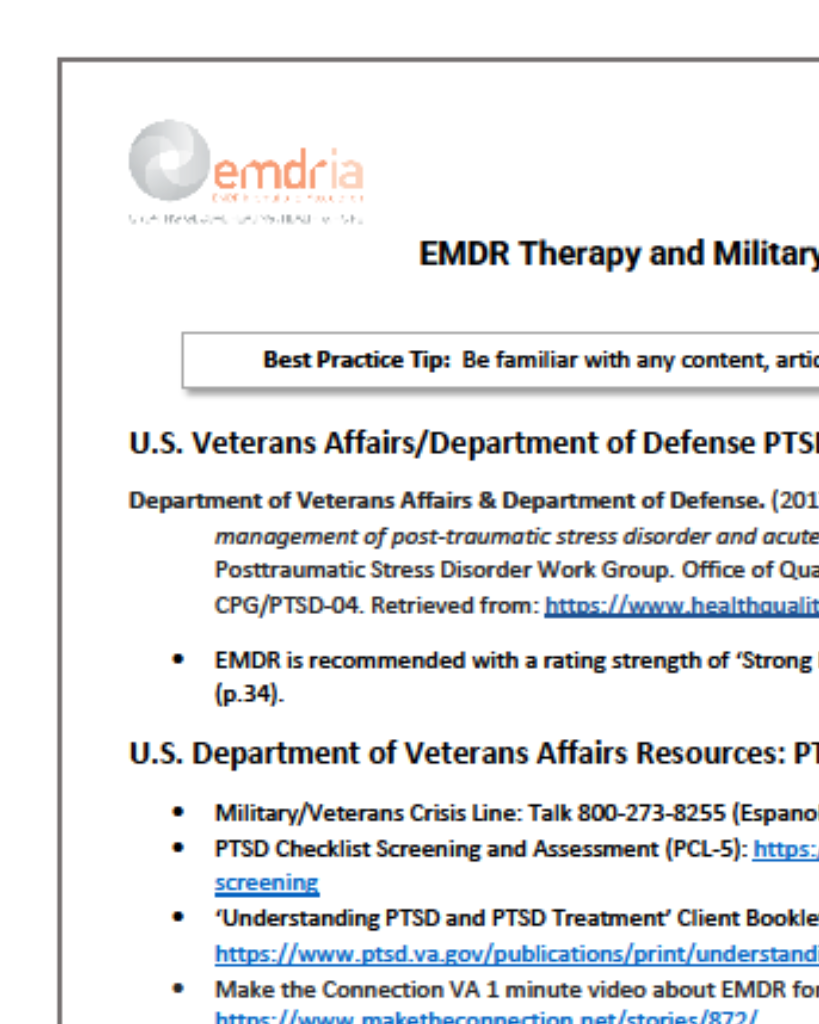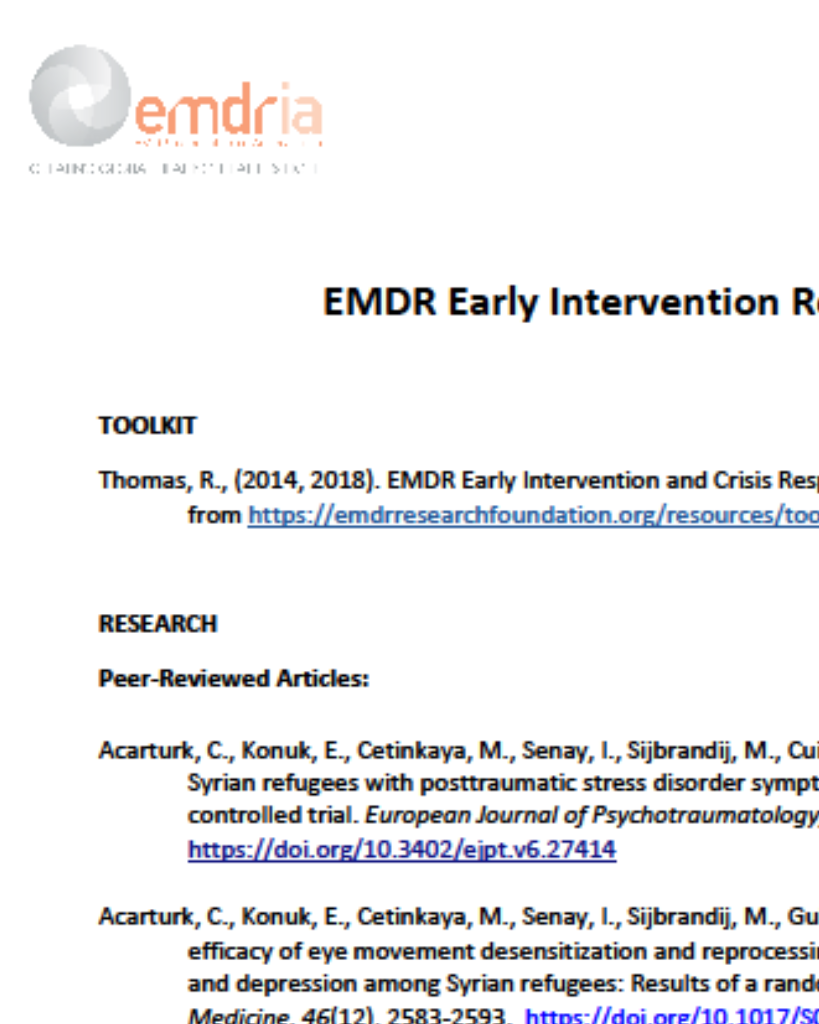The Effectiveness of EMDR for Medically Unexplained Symptoms: A Systematic Literature Review
This meta-analysis looks at medically unexplained symptoms, unresolved traumatic or distressing somatic-related memories & how EMDR can help.
“Introduction: It has been hypothesized that certain persistent physical symptoms (PPS) may be linked to unresolved traumatic or distressing somatic-symptom related memories. EMDR intervention targets and reintegrates distressing memories, thus reducing the re-experiencing of physical sensations.
The primary aim of this review was to examine effectiveness of EMDR for PPS. Secondary aims were to investigate effectiveness of EMDR on secondary outcomes (post-traumatic stress, anxiety, and depression), and to evaluate the acceptability of EMDR for this client group. Method: Six electronic databases (PsycInfo, PsycArticles, CINAHL, MEDLINE, Web of Science and SCOPUS) were searched for peer-reviewed literature, with no restrictions on publication dates. Twenty-eight studies met inclusion criteria. Studies were included if the primary aim of EMDR intervention was to reduce intensity, frequency or reported distress associated with PPS. Studies were quality appraised using the MMAT tool prior to narrative synthesis of key findings. Results: Studies varied in design and included RCT, UCT, case study and case series. EMDR treatment length varied between studies; 1–20 sessions.
All studies reported significant improvement in PPS at post-test. Effect sizes were available to report in five studies and ranged from moderate to large. Improvement in secondary outcomes were reported in all repeated measure studies. Where available, large effect sizes were reported for reduction in anxiety and depression. Overall drop-out rates in studies with representative samples was low (10.6%). Quality of research varied; low (42.8%), medium (21.4%), and high (35.7%). Conclusions: There is promising emerging evidence for effectiveness and acceptability of EMDR for a range of PPS. However, firm conclusions on efficacy cannot be made. While comparisons between PPS presentations cannot be drawn due to methodological differences, the findings for pain and tinnitus are the most compelling due to methodological quality. High-quality sufficiently powered RCTs are recommended to determine efficacy.”
—Description from publisher
Article Access
Open Access
Staton, A., Wilde, S., & Dawson, D. L. (2022). The Effectiveness of EMDR for Medically Unexplained Symptoms: A Systematic Literature Review. Journal of EMDR Practice and Research, 16(4), 170–201. https://doi.org/10.1891/EMDR-2022-0017
About the Journal
The Journal of EMDR Practice and Research is a peer-reviewed publication devoted to integrative, state-of-the-art papers about Eye Movement Desensitization and Reprocessing. It is a broadly conceived interdisciplinary journal that stimulates and communicates research and theory about EMDR, and their application to clinical practice. The Journal of EMDR Practice and Research is the Official Publication of the EMDR International Association.
Date
December 1, 2022
Creator(s)
Amelia Staton, Sarah Wilde, David L. Dawson
Topics
Medical/Somatic
Extent
32 pages
Publisher
Springer Publishing Company
Rights
Copyright © 2022 EMDR International Association
APA Citation
Staton, A., Wilde, S., & Dawson, D. L. (2022). The Effectiveness of EMDR for Medically Unexplained Symptoms: A Systematic Literature Review. Journal of EMDR Practice and Research, 16(4), 170–201. https://doi.org/10.1891/EMDR-2022-0017
Series
16
Installment
4
Audience
EMDR Therapists
Language
English
Content Type
Meta-analyses/Systematic Reviews
Original Source
Journal of EMDR Practice and Research
Access Type
Open Access





